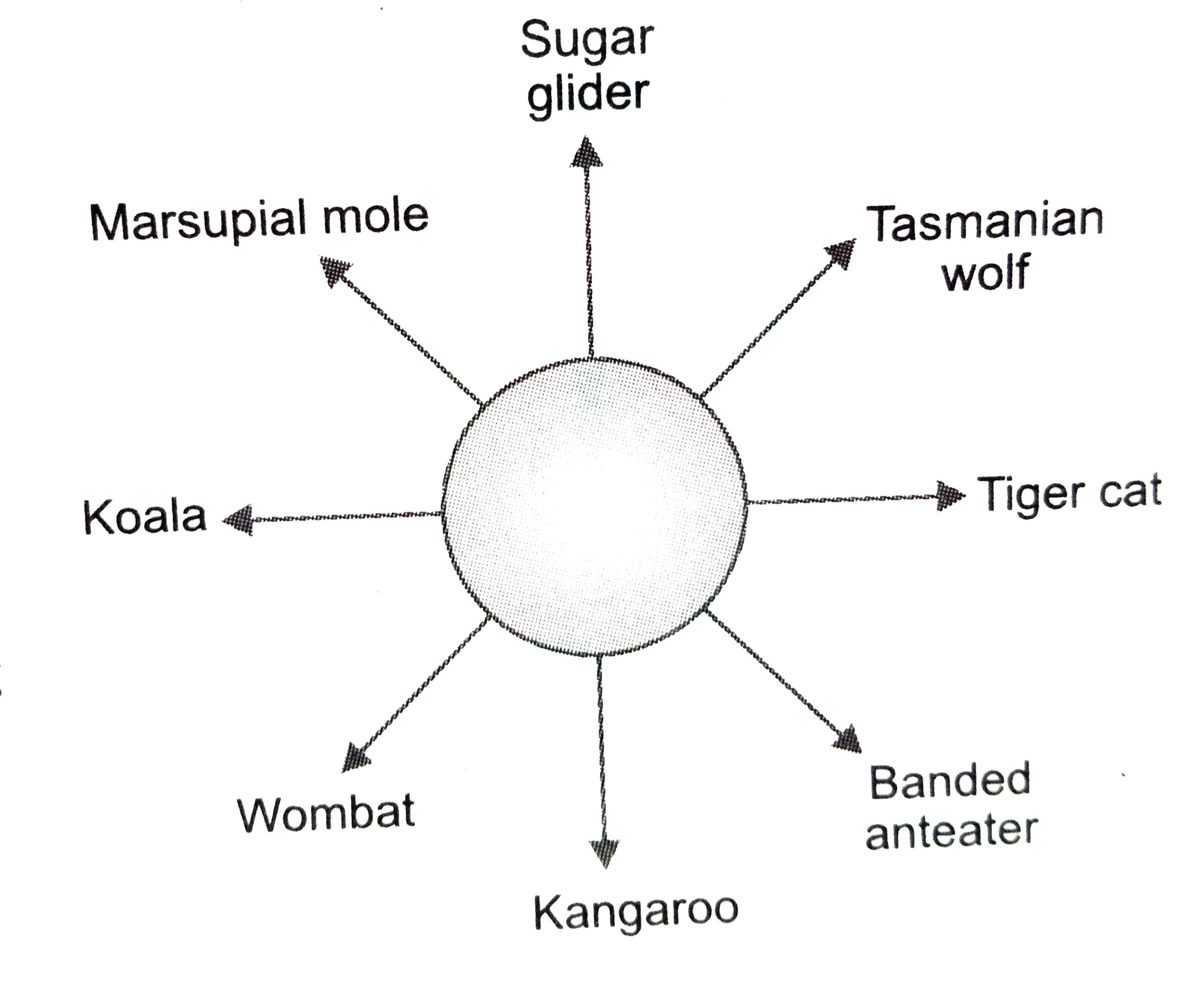When kept in water, raisin swells in size. Name and explain the phenomenon involved with the help of a diagram. Give thre applications of the phenomenon.
Step-by-Step Text Solution:
Step 1: Identify the Phenomenon
When raisins are placed in water, they swell in size due to the phenomenon known as endosmosis. This process involves the movement of water from an area of higher concentration (the surrounding water) to an area of lower concentration (inside the raisin).
Step 2: Explain Endosmosis
Endosmosis is a specific type of osmosis where water moves into a cell or a semi-permeable membrane from the surrounding environment. In the case of the raisin:
- The raisin has a semi-permeable membrane that allows water to pass through.
- The concentration of water inside the raisin is lower than that in the surrounding water.
- Therefore, water moves from the beaker (high concentration) into the raisin (low concentration), causing the raisin to swell.
Step 3: Diagram Representation
To illustrate this process, we can draw a simple diagram:
±−−−−−−−−−−−−−−−−−−−−+|||Water||||±−−−−−−−−−−−−+|||Raisin|||±−−−−−−−−−−−−+|∣∣±−−−−−−−−−−−−−−−−−−−−+
- In the diagram, the beaker contains water, and the raisin is submerged. The arrows can be drawn to indicate the movement of water into the raisin.
Step 4: Applications of Endosmosis
1. Water Movement in Plants: Endosmosis is crucial for the absorption of water from the soil into plant roots, allowing plants to maintain hydration and nutrient transport.
2. Food Preservation: Salt is used in preserving meat because it creates a hypertonic environment. This causes bacteria to lose water through osmosis, inhibiting their growth and preserving the meat.
3. Desalination: Reverse osmosis is an industrial application where water is purified by forcing it through a semi-permeable membrane, removing salts and impurities. This is essential for providing fresh water in areas where it is scarce.
When raisins are placed in water, they swell in size due to the phenomenon known as endosmosis. This process involves the movement of water from an area of higher concentration (the surrounding water) to an area of lower concentration (inside the raisin).
Endosmosis is a specific type of osmosis where water moves into a cell or a semi-permeable membrane from the surrounding environment. In the case of the raisin:
- The raisin has a semi-permeable membrane that allows water to pass through.
- The concentration of water inside the raisin is lower than that in the surrounding water.
- Therefore, water moves from the beaker (high concentration) into the raisin (low concentration), causing the raisin to swell.
To illustrate this process, we can draw a simple diagram:
- In the diagram, the beaker contains water, and the raisin is submerged. The arrows can be drawn to indicate the movement of water into the raisin.
1. Water Movement in Plants: Endosmosis is crucial for the absorption of water from the soil into plant roots, allowing plants to maintain hydration and nutrient transport.
2. Food Preservation: Salt is used in preserving meat because it creates a hypertonic environment. This causes bacteria to lose water through osmosis, inhibiting their growth and preserving the meat.
Topper's Solved these Questions
- SOLUTIONS BOOK - NCERT EXEMPLAR ENGLISHCHAPTER - SOLUTIONS EXERCISE - MULTIPLE CHOICE QUESTIONS (MORE THAN ONE OPTIONS
28 Videos
- SOLID STATEBOOK - NCERT EXEMPLAR ENGLISHCHAPTER - SOLID STATEEXERCISE - long answer type questions
4 Videos
- SURFACE CHEMISTRYBOOK - NCERT EXEMPLAR ENGLISHCHAPTER - SURFACE CHEMISTRYEXERCISE - Long Answer Type Questions
4 Videos
Similar Questions
Name the phenomenon involved, in tuning the radio set.
View SolutionName and explain the phenomenon that has resulted in the evolution of such diverse species in the region.
View SolutionWhy do raisins absorb water when soaked in water ? Explain the phenomenon.
View SolutionName the phenomenon involved : The formation of gas bubbles in a liquid during a reaction.
View SolutionMention the specific geographical region where these organisms are found.
Name and explain the phenomenon that has resulted in the evolution of such diverse species in the region.
Explain giving reason the existence of placental wolf and Tasmania wolf sharing the same habitat.
View SolutionStudy the figures below and answer the following :
(a)Mention the specific geographical region where these organisms are found.
(b)Name and explain the phenomenon that has resulted in the evolution of such diverse species in the region.
(c )Explain giving reasons the existance of placental wolf and Tasmanian wolf sharing the same habitat.

View SolutionExplain the term Plasmolysis. Give one application of this phenomenon in our daily lives.
View SolutionExplain the term plasmolysis. Give one application of this phenomenon in our daily lives.
View SolutionName the phenomenon which is responsible for bending of light around sharp corners of an obstacle. Under what conditions does this phenomenon take place ? Give one application of this phenomenon in everyday life.
View SolutionWhen any dry plant material or seeds are kept in water, they swell up.
Q (a) Name the phenomenon involved in this change.
View Solution
